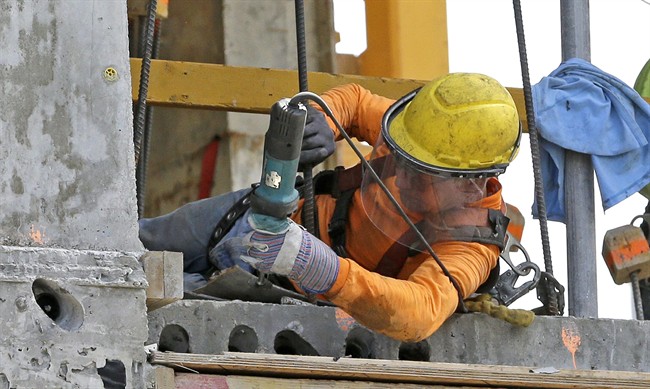The Canadian economy added 63,300 jobs in September, pushing the unemployment rate slightly lower to 5.9 per cent.

The data release caps three months of wild swings. Last month’s blockbuster labour market results come after a net loss of nearly 52,000 positions in August and a gain of over 54,000 jobs in July.
WATCH: The most wanted entry-level jobs, according to Indeed Canada

This kind of seesawing is unusual even for Canada’s notoriously volatile jobs numbers and surprised economists, who had expected much more modest employment gains in September.
The job number “blew past expectations,” Royce Mendes, director and senior economist for CIBC Capital Markets, wrote in a note to clients.

Get weekly money news
But the report “hid some softer details,” he added.
The job gains came from the part-time sector, “taking some of the shine off of the headline reading.” Part-time positions were up by around 80,000, the data shows.
Hourly earnings also grew at a slower pace, climbing just 2.4 per cent year-over-year compared to 2.6 per cent in August. and a peak of 3.3 per cent at the start of the year, Douglas Porter, chief economists at BMO Financial Group, wrote.
READ MORE: Canadian economy loses more than 51K jobs in August
Regionally, seven provinces saw job gains in September, with Ontario and B.C. adding 36,000 and 33,000 net new positions, respectively. B.C.’s unemployment rate now stands at just 4.2 per cent, by far the lowest in the country, Porter noted. But the jobless rate dropped across the Atlantic provinces as well, down to 7.9 per cent and 7.8 per cent from 8.3 per cent and 8.4 per cent in New Brunswick and Nova Scotia. Bucking the trend, Alberta saw its unemployment rate edge up to 7 per cent, still significantly lower than the 7.8 per cent recorded a year ago.
The job gains were concentrated in the private sector and particularly the construction industry.
On a year-over-year basis, Canada has gained 222,000 jobs since September 2017. And the labour force survey found that all of the job gains were made by workers in the core 25-to-54 age range with virtually no change in youth employment.
– With files from the Canadian Press




Comments